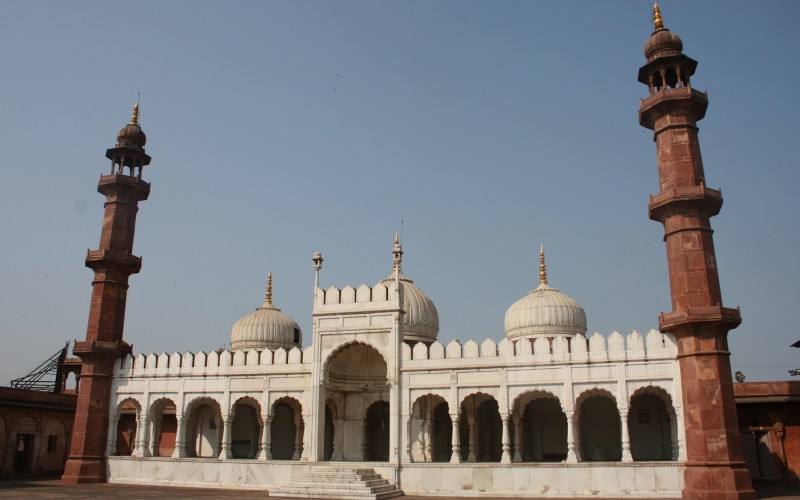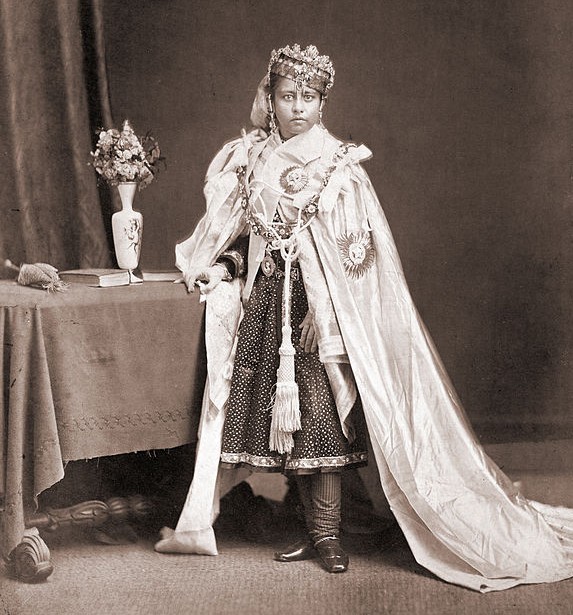Great Women In Islamic History: Three Female Rulers In Bhopal, India

Moti Mosque in Bhopal, India, built by Skander Begum, and photographed
on October 25, 2011.
Skander Begum was part of a tradition of
progressive female leaders who ruled Bhopal with the aid
of Britain.
(Flickr / Nagarjun Kandukuru)
This concludes Dr. Rampoldi’s series on the often overlooked women leaders of Muslim history.
See also Introduction: A Forgotten Study Of Female Political Power In Islamic History.
Üçok’s research about female rulers in Muslim countries concludes
with this chapter about three female rulers in the Moslem State of
Bhopal in India founded by Dost Mohammed Khan, an Afghan adventurer in
the service of the Turkish Indian King Evrengizb. After Evrengizb’s
death, he declared his independence on the territories he had obtained
as a reward for his services or through diplomacy.
When he died in 1740, aged 66, his two sons and three grandsons were
too incompetent or too young, and the administration of the country was
taken over by Hindu viziers at his court.
During the reign of Dost Mohammed’s third grandson, who died in 1778,
close relations were established between Britain and Bhopal, which
continued uninterrupted.
Towards the end of the XVIII century, Bhopal was attacked by Pinzara
raiding parties; the Marathas, who were invited to put an end to these
pillaging expeditions, refused to leave the country when their mission
was completed. In 1807-9 the Vizier Mohammed Khan, the navvab’s nephew,
recovered most of the territory lost to the Marathas, and with the help
of Britain saved the state of Bhopal from collapse.
Mohammed died in 1816 after sitting on the Bhopal throne for 9 years,
and was succeeded by Nazır Mohammed Khan, whose wife was Kutsiye Begum,
daughter of the former king Gavs Mohammed Khan. Nazar Mohammed Khan
signed a treaty with Britain whereby in return for 300 infantry and 600
cavalry to be put in the service of the British army, its sovereignty
was guaranteed.

Shah Djihan Begum of Bhopal, India, photographed in 1872 by India’s
historic Bourne and Shepherd photography studio. Under the rule of the
Begums, Bhopal expanded its borders and instituted reforms in women’s
education and other sectors. (Wikimedia Commons)
When he died three years later, his wife Kutsiye Begum was made
regent as his daughter Skandar Begum was still a minor. Kutsiye Begum
did all that lay in her power to prolong her period of regency, going so
far as to delay the wedding of her daughter; she was reluctant to
relinquish the control of the state even after the wedding. This led the
bridegroom, Djihanghir Mohammed, nephew of Nazar Mohammed, to open
revolt; but he was defeated and surrounded in a fort by his
mother-in-law’s and his wife’s soldiers.
Through the intercession of Britain in 1837, the government was put
in the hands of Djihanghir Mohammed, and Kutsiye Begum was sent into
retirement. After Mohammed’s death, his wife Skandar Begum came on the
throne and ruled the country with great success until 1868.
Being a woman of rare administrative ability, she won the respect and
admiration of her subjects and her achievements became models for later
administrators. Within six years she paid off all the debts of the
state, improved the system of taxation, established close relations with
large landowners and influential towns-people. Among the various
reforms she accomplished, she also organised the police force. She used
to go out among the people dressed as a man. She appointed her daughter
Shah Djihan Begum as her successor. In comparison with Aceh, we see the active role of these female rulers in Bhopal.
During the Sepoy uprising in 1857, she acted with a courage which was
rare even in a man, crushed the revolt, severely punished the culprits
and restored order in her domain. Because of the protection she gave to
British officers, Britain helped her to extend the borders of her
country.
She went on a pilgrimage to Mecca in 1864 and wrote a book about her impressions of the journey. The date of her death is 1868.
The next female ruler in Bhopal was Skandar Begum’s daughter Shah
Djihan Begum, who succeeded to the throne under the name of Nevvab Shah
Djihan Begum. When her first husband died in 1867, she continued as
administrator for a time, but retired from active work after marrying
Mohammed Sıddîk Hasan Khan, having proved that she was as capable a
woman as her mother.
Shah Djihan died on 16 June 1901 and her daughter Sultan Djihan
ascended to the throne as the sole heir. She had been married since 1874
and was another talented woman with many interests, such as education,
medical aid to women, agriculture and industry.
Sultan Djihan Begum visited Europe with her son in 1911 and 1925, and
on her first visit she met Abdulhamid II, and on her second visit
Mehmed Reshad V.
On 18th May 1926, she abdicated in favour of her son; and in 1927 the
British government confirmed the right of women to ascend to the throne
when there was no male heir.
Sultan Djihan Begum, another female sovereign dispersed through the labyrinth of history, died on 18th May 1930.
This series is based on “Female Sovereigns in Islamic States.” You can find it on Amazon here.
Thanks for your comments to this article published on MintPress!!
Dr. phil. Milena Rampoldi – ProMosaik e.V.


